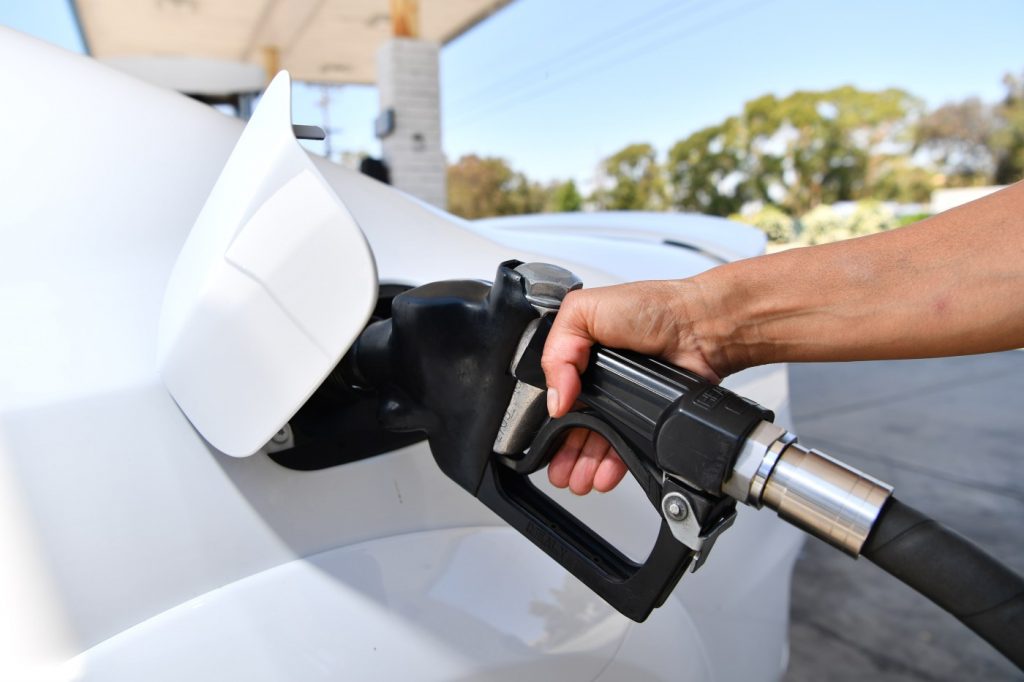The price drivers pay at the gas pump — averaging $3.45 in June — includes a federal tax of 18.4 cents per gallon, plus state taxes that vary widely.
In seven places, those state taxes are set to increase at the height of the summer driving season. The list below shows the total state taxes for those spots, effective July 1:
California: 69.8 cents per gallon — the highest of all states.
Colorado: 27.9 cents per gallon.
Illinois: 67.1 cents per gallon.
Indiana: 56.1 cents per gallon.
Missouri: 27.5 cents per gallon.
Nebraska: 30.5 cents per gallon.
Virginia: 40.4 cents per gallon.
How these states will hike their taxes
In California, the state’s excise tax on gas will rise from 57.9 cents per gallon to 59.6 cents per gallon, according to the California Department of Tax and Fee Administration. When other state taxes and fees are taken into account, the state tax on a gallon of fuel in California will rise from about 68 cents to about 70 cents.
In Colorado, the state’s road usage fee will increase from 3 cents per gallon to 4 cents per gallon, according to the Colorado Department of Revenue. Additionally, an environmental fee will increase from 0.6 cents per gallon to about 1.3 cents per gallon. Those fees are on top of a 22-cent gas tax. Altogether, the state tax on gas will increase from about 26 cents per gallon to about 28 cents per gallon.
In Illinois, the state’s gas tax will increase from 45.4 cents per gallon to 47 cents per gallon, according to the Illinois Department of Revenue. All told, the state tax on gas will increase from 66.5 cents per gallon to 67.1 cents per gallon — the second highest in the country
In Indiana, the gas tax will increase from 34 to 35 cents per gallon, according to the Indiana Department of Revenue. In addition to that excise tax and a 1-cent oil inspection fee, the state charges a gasoline use tax. That tax rate is adjusted on a monthly basis. In July, the use tax rate will be 20.1 cents per gallon. In all, Indiana drivers’ state taxes will total 56.1 cents per gallon.
In Missouri, the motor fuel tax rate will increase from 24.5 cents per gallon to 27 cents per gallon, according to the Missouri Department of Revenue. Combined with two other fees levied on a gallon of gas, totaling about half a cent, the state taxes will add up to 27.5 cents per gallon.
In Nebraska, the fuel tax rate goes up half a cent to 29.6 cents per gallon, according to the Nebraska Department of Revenue. Combined with an environmental fee, drivers in the state pay 30.5 cents per gallon in state taxes.
In Virginia, the motor fuels tax rate will increase from 29.8 cents per gallon to 30.8 cents per gallon, according to the Virginia Department of Motor Vehicles. Additionally, the state’s sales tax rate for gas will increase from 8.7 cents per gallon to 9 cents. In all, motorists will pay 40.4 cents per gallon in state taxes.
How gas prices are set
Related Articles
Richmond council places Chevron tax on November ballot
Gas prices expected to drop this summer
Khanna: Price-fixing case shows need for aggressive Big Oil investigations
Walters: Inflation hits California families hardest. It’s shaping their views on the economy
ConocoPhillips buying Marathon Oil for $17.1 billion
The price of gas depends largely on the price of oil and the cost of refining it. But federal, state and local taxes and fees can add significantly to the total.
On top of the federal tax on gasoline of 18.4 cents per gallon, most states levy multiple taxes and fees on a gallon of gas, including some combination of excise taxes (those imposed on goods, services and activities), sales taxes, environmental taxes and inspection fees.
Those costs add up to an average of 32.6 cents per gallon in state taxes, according to a NerdWallet analysis of U.S. Energy Information Administration data. Combined with the federal tax, that’s 51 cents, on average, added to the cost of every gallon of gas.
But state tax rates vary widely. California’s rate (69.8 cents per gallon) and Illinois’ rate (67.1 cents) are highest, followed by Pennsylvania’s (58.7 cents). Alaska has, by far, the lowest state tax (9 cents per gallon), followed by Mississippi (18.4 cents) and Hawaii (18.5 cents).
In many cases, gas taxes are adjusted annually based on the consumer price index, a proxy for inflation calculated by the U.S. Bureau of Labor Statistics. That means taxes may rise (or fall) with the annual rate of inflation. Sometimes states also phase in new or higher fees by increasing them incrementally on an annual basis.
As for what happens with that tax revenue, states often use it to fund infrastructure improvements and environmental initiatives.
The article Heads Up, Drivers: 7 States Will Pump Up Gas Taxes on July 1 originally appeared on NerdWallet.


